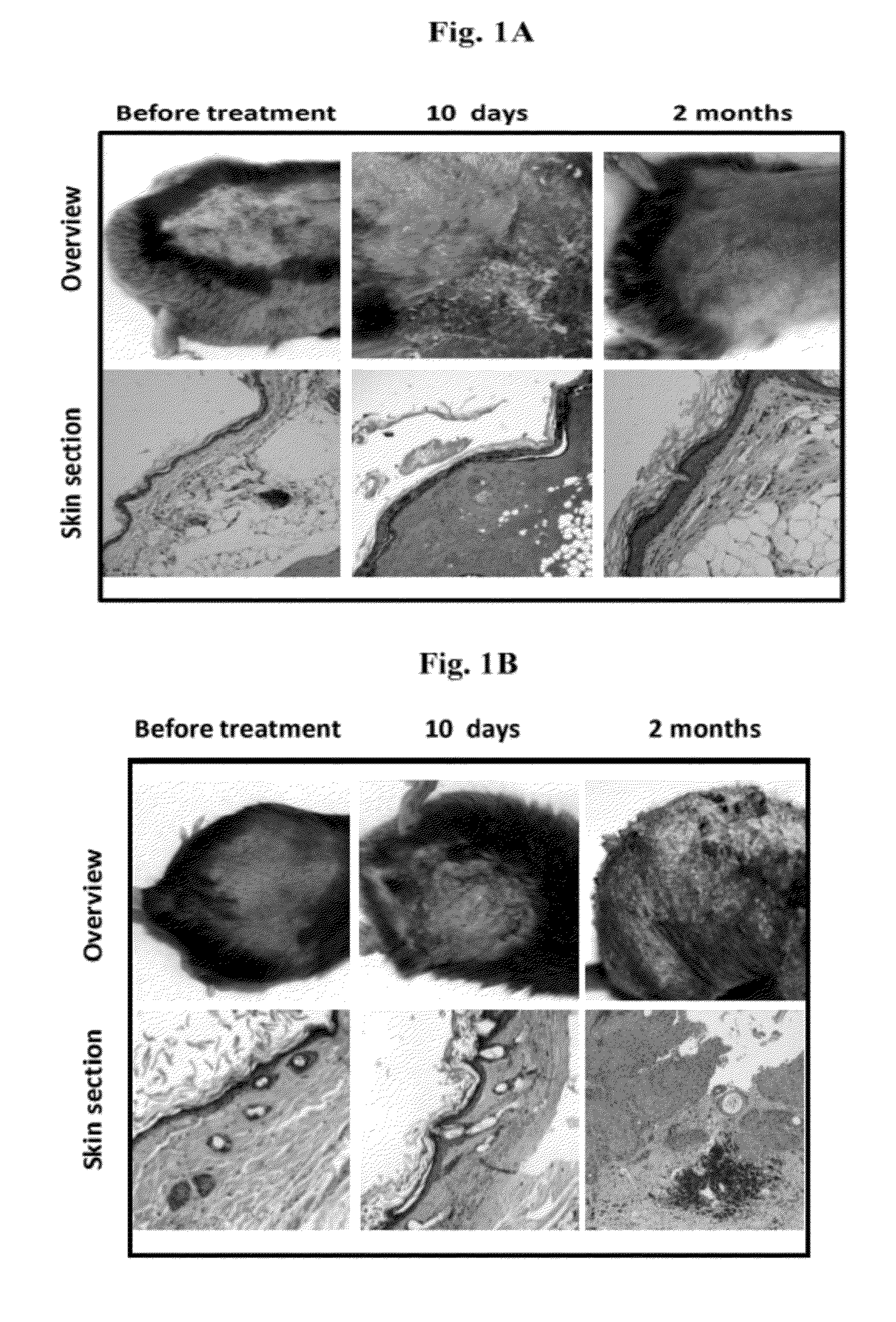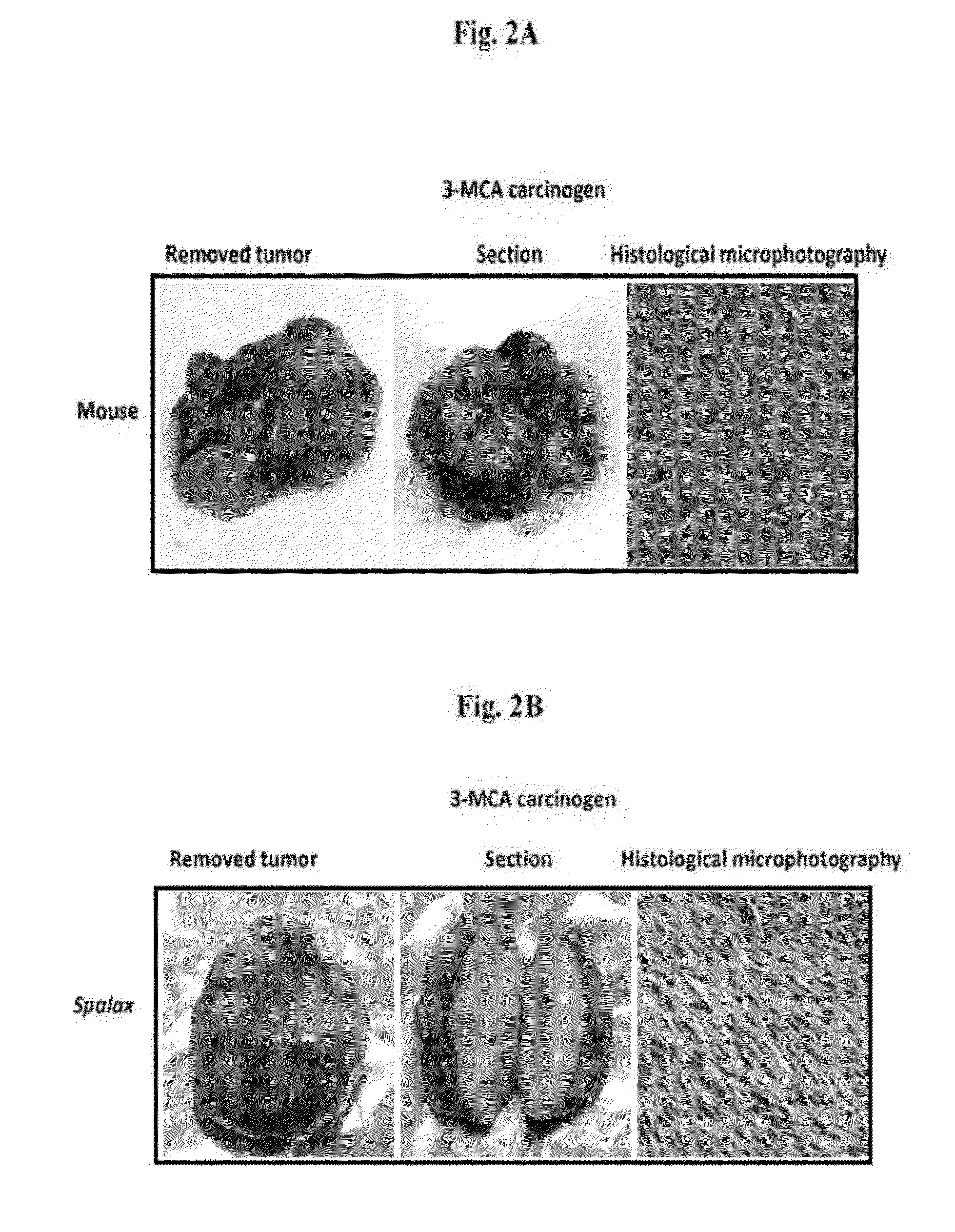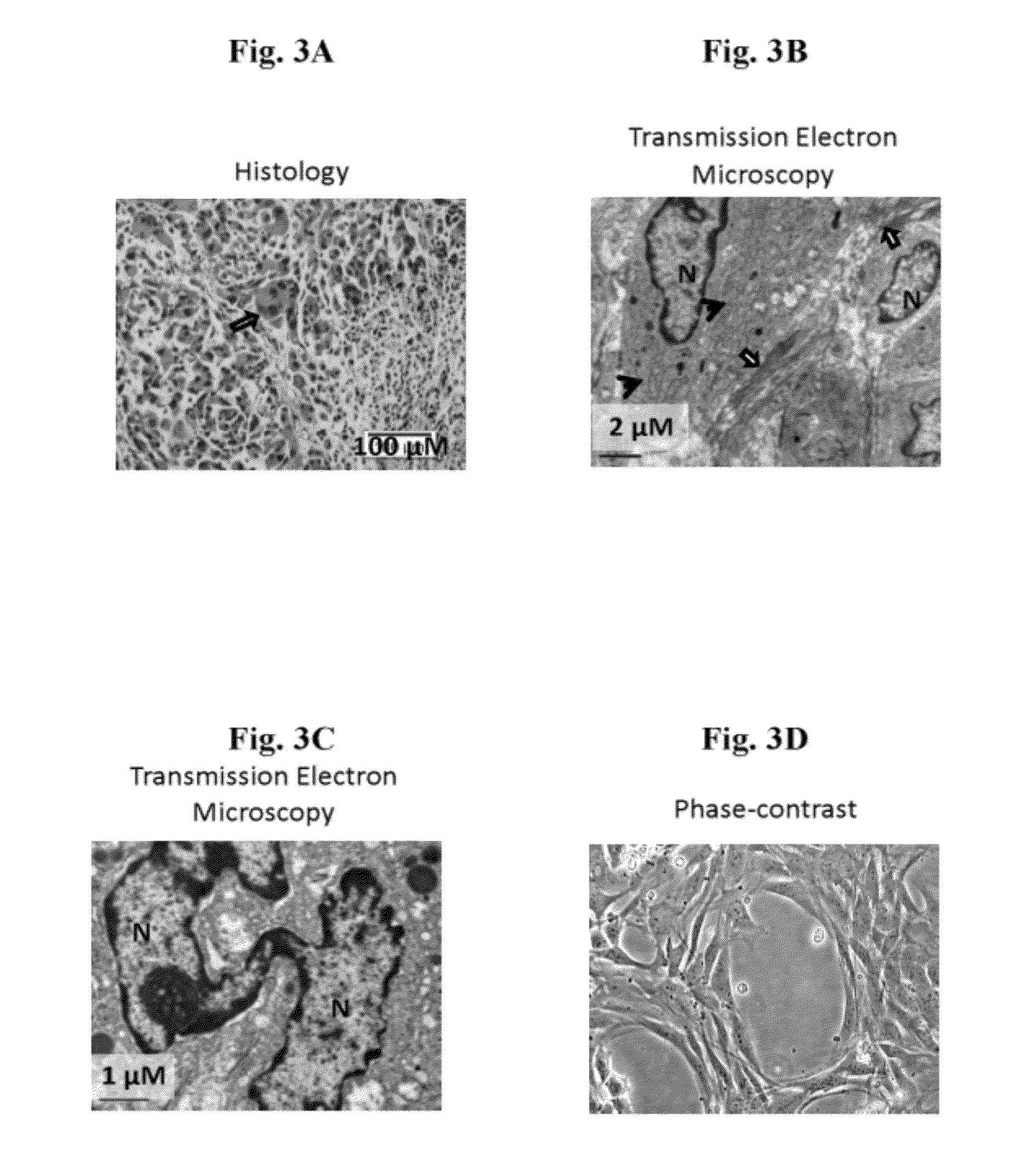Spalax fibroblast-derived Anti-cancer agents
- Summary
- Abstract
- Description
- Claims
- Application Information
AI Technical Summary
Benefits of technology
Problems solved by technology
Method used
Image
Examples
example 1
Resistance of Spalax to Chemically-Induced Cancer
[0093]To assess experimentally if Spalax is resistant to chemically-induced carcinogenesis, we treated animals from different rodent species according to the following protocols:
[0094]DMBA / TPA Treatment:
[0095]Spalax and C57BL / 6 mice were treated with DMBA / TPA to induce skin carcinogenesis (Goerttler et al. 1982). Spalax animals developed severe skin lesions within ten days (FIG. 1A, upper middle panel). Histological examination of hematoxylin and eosin stained tissue sections demonstrated extensive skin necrosis involving the deep parts of the dermis, massive infiltration of the affected areas with neutrophil leukocytes, and ulcerated epidermis focally covered with fibrino-purulent exudates (FIG. 1A, lower middle panel). The subcutaneous skeletal muscle and bone tissues were not affected, and no tumor was identified. The wounds completely healed within 7-9 weeks, resulting in epidermal thickening (FIG. 1A, right panels), and no furthe...
example 2
Spalax Fibroblasts Suppress Growth of Cancer Cells In Vitro
[0099]To compare the effects of Spalax and mouse fibroblasts on growth of human epithelial cancer (Hep3B), we used a co-culture approach, where skin fibroblasts isolated from newborn rodents were cultured together with cancer cells on a shared surface (FIG. 4). The number of cancer cells co-cultured with mouse fibroblasts increased gradually, and on Day 7, Hep3B cells surrounded by mouse fibroblasts reached ˜80% confluence, similar to control (Hep3B only). In contrast, obvious inhibition of cancer cell growth was found when Hep3B cells were co-cultured with Spalax fibroblasts: foci of destroyed cancer cells were visible (FIG. 4). Prolonged co-cultivation up to 11 days resulted in further destruction of cancer cell colonies by Spalax fibroblasts and the spaces previously occupied by Hep3B cells were invaded by fibroblasts. Overgrown Hep3B colonies were found when co-cultured with mouse fibroblasts.
[0100]Since we compare a wil...
PUM
 Login to View More
Login to View More Abstract
Description
Claims
Application Information
 Login to View More
Login to View More - R&D
- Intellectual Property
- Life Sciences
- Materials
- Tech Scout
- Unparalleled Data Quality
- Higher Quality Content
- 60% Fewer Hallucinations
Browse by: Latest US Patents, China's latest patents, Technical Efficacy Thesaurus, Application Domain, Technology Topic, Popular Technical Reports.
© 2025 PatSnap. All rights reserved.Legal|Privacy policy|Modern Slavery Act Transparency Statement|Sitemap|About US| Contact US: help@patsnap.com



